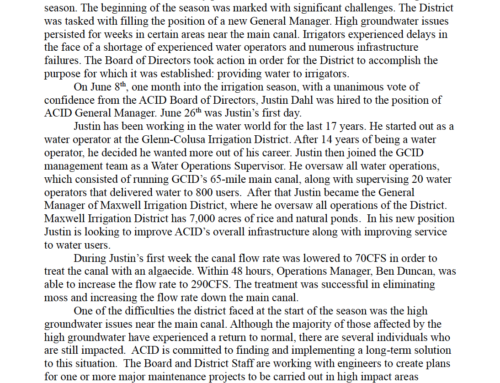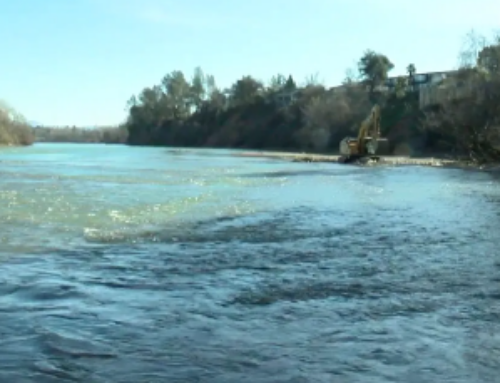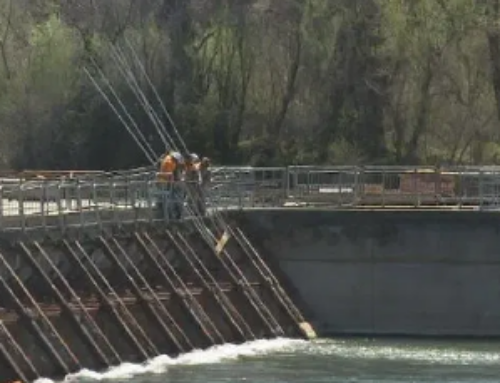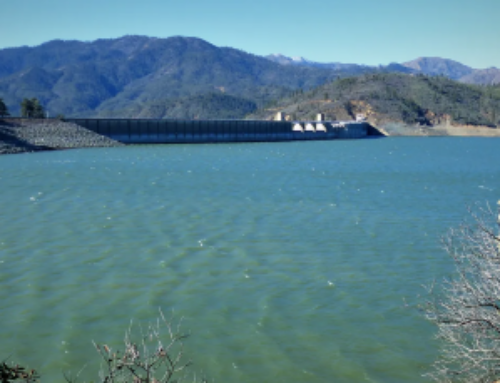Less than a year after going through one of the worst droughts on record, Redding and other North State residents could reap the benefits of rain and snow levels that returned to more normal levels this winter.
The U.S. Bureau of Reclamation, which controls water allocations to numerous agencies in Northern California, announced Wednesday that senior water rights holders such as the city of Redding and Anderson-Cottonwood Irrigation District would get 100% of their largest contracts with the bureau.
Junior water rights holders, which comprise several other water districts in Shasta County, would receive 75% of their allotments, officials said.
A year ago, the agency told contractors that as the drought dragged on through a third year they should expect major cutbacks in how much water they would receive.
Many agencies had their allocations cut to zero, and even the most senior water rights holders ― such as Redding and A.C.I.D. ― had their rations cut to 18%. Cutbacks were so severe in 2022 that for the first time in 106 years, A.C.I.D. did not deliver water to its customers.
But on Wednesday, federal officials said that because rain and snowfall levels throughout the state were much higher than last year, agencies were likely to receive more water in 2023.
It was good news to Josh Watkins, Redding’s water utility manager.
“It’s just great. It makes everything more relaxed. We can just go out and do our job. We can worry about other things. We can worry about our normal day-to-day operations, rather than whether we’re going to have water or what percentage of water we’re going to have,” Watkins said.
Many other water districts surrounding Redding will receive 75% of their full allocation from the bureau, according to Wednesday’s announcement. Those districts with junior water rights include Bella Vista Water District, city of Shasta Lake, Clear Creek Community Services District, Centerville Community Services District, Shasta Community Services District and others.
The city of Anderson mainly delivers drinking water to its residents after pumping it from the ground. Redding and Bella Vista also pump groundwater to augment their bureau sources.
Even while bureau officials delivered better news this year, they also cautioned that unless rains continue through at least April, there could be curtailments in the amount of water that is delivered to various agencies.
“I think March will tell the story of whether we’re really out of the drought or not,” said reclamation’s Regional Director, Ernest Conant. “We are all too aware of uncertainties that exist and how rapidly conditions in California can change.”
Conant said rain needs to continue to flow into Lake Shasta, which stores water that is used throughout large areas of the state. As of Wednesday, the reservoir was 59% full and 85% of its historical average for this time of year.
At this time last year, Lake Shasta was about 37% full, and the water level was 53% of its historical average.
Kristin White, operations manager for the bureau’s Central Valley Project, said Trinity Lake is another important component to the state’s water supply.
“I’ll just add that I think we’d really like to see Shasta and Trinity full before we say that we’re out of the drought,” White said.
While Trinity Lake is in the Klamath River watershed, water from the reservoir flows into Lewiston Lake, with some of its water piped over the mountains to Whiskeytown Lake and it eventually flows into the Sacramento River.
On Wednesday, Trinity Lake was 32% full and 49% of its historical average. White said Trinity is at a higher elevation and more dependent on snow melt, so the reservoir is more likely to fill in the spring. Lake Shasta, however, relies mostly on rainfall to fill the reservoir.
Conant said the bureau will provide updates to water supply allocations to agriculture and municipal contractors into the spring.
“We do have some precipitation on the way and we are definitely not out of the wet season. So we’ll keep monitoring that and seeing what direction it’s heading,” White said.
See the original article here.





